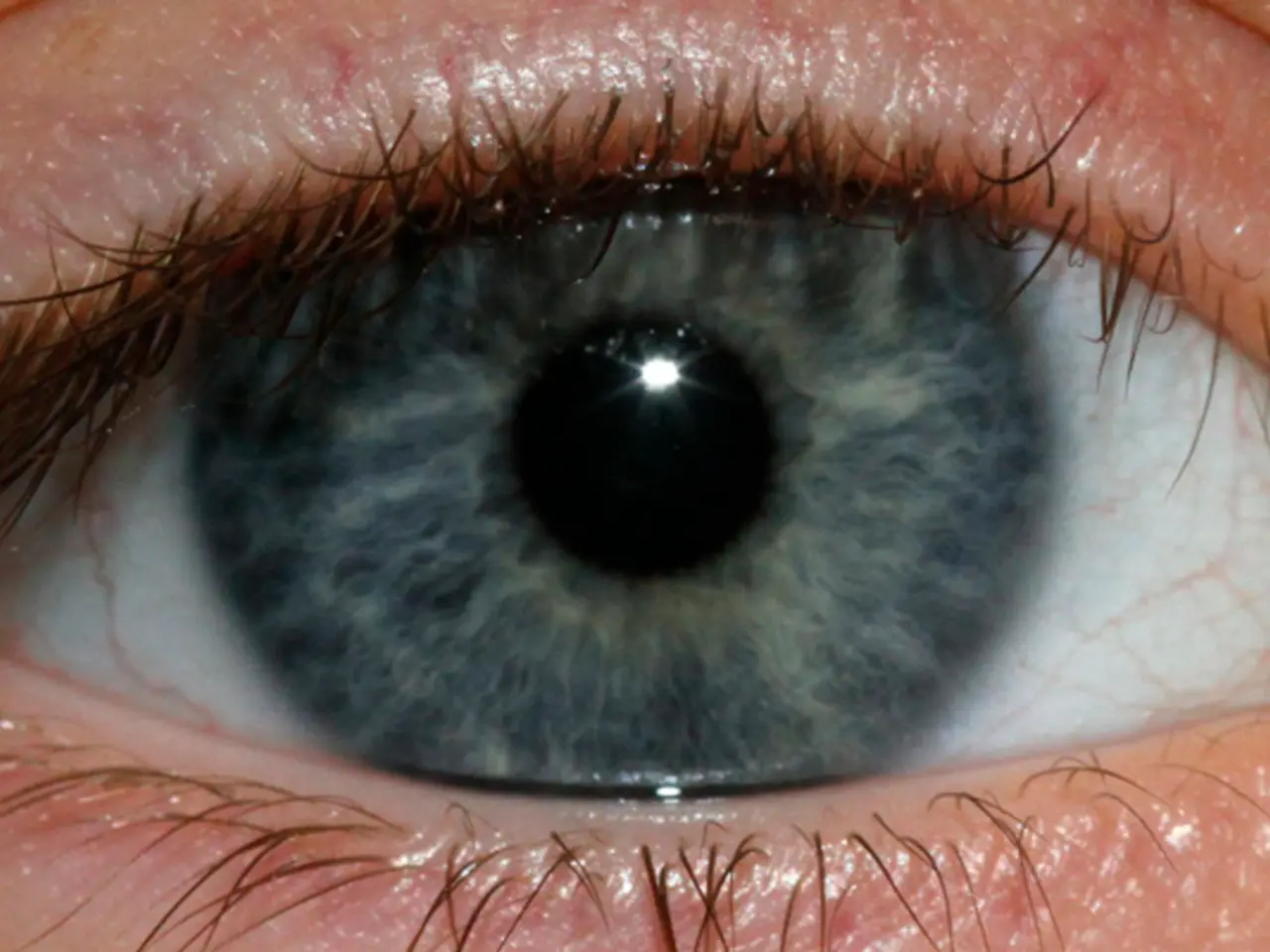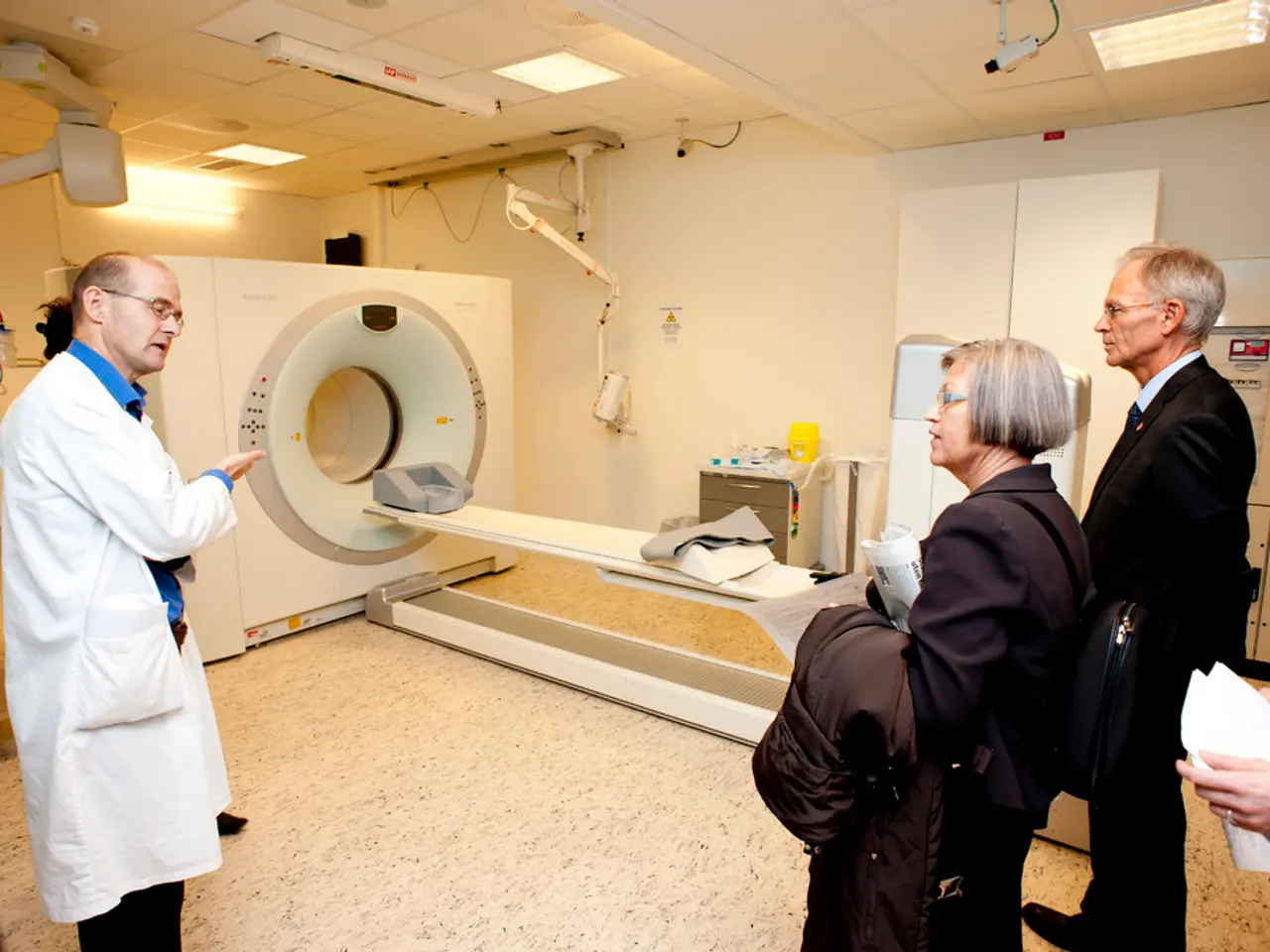Enlarged pupils: Signaling desire and emotional state
In the realm of human behaviour and emotions, pupil dilation has emerged as a fascinating subject of scientific research. This small yet significant response in the eyes is closely linked to attraction and various mood states.
Key findings reveal that pupil dilation can function as a marker of attraction. During romantic arousal and emotional engagement, the body releases 'love hormones' such as oxytocin, which chemically enhance pupil size. Larger pupil size may thus serve as an unconscious giveaway of romantic interest [1].
However, it's essential to note that pupil dilation is not exclusive to attraction. It also occurs in response to emotionally engaging or arousing stimuli beyond romantic interest. Classic psychological research demonstrates that pupils enlarge not only when people see someone they like but also when they experience intense emotions or heightened interest [5][1].
Researchers emphasise the importance of observing other nonverbal behaviours linked to attraction, such as increased eye contact, longer gaze duration, mirroring of body language, and increased touching. These behaviours often accompany pupil dilation in contexts of romantic interest [1].
Studies involving eye-tracking of emotional facial expressions show that gaze patterns, including pupil size and fixations, are guided by emotion recognition mechanisms. Observers tend to focus on emotion-informative facial features, and pupil responses can vary depending on emotional states, though these studies focus more broadly on emotion rather than attraction per se [2].
Moreover, pupil dilation has been linked to mood-related learning in infants, indicating that it reflects cognitive and emotional responses to new and absorbing stimuli [4].
While pupil dilation is a scientifically validated physiological indicator of attraction and emotional arousal, it is best interpreted alongside other behavioural signals and in context. Pupil size can change due to lighting, cognitive effort, and other moods [1][5].
Some research suggests that pupil dilation might be an involuntary sign of attraction, triggered by the autonomic nervous system during emotions such as arousal or attraction [3]. However, more research is needed to establish whether pupil dilation is a sign of attraction or a result of other factors, such as hormones or involuntary bodily responses.
It's worth mentioning that other factors can cause pupil dilation, including medications, eye injuries, neurological conditions, and brain injuries [6].
Intriguingly, a study found that erotic videos led to pupil dilation in participants of varying sexual orientations, suggesting a universal response [7]. However, the extent to which pupil dilation is specific to attraction remains a topic of ongoing research.
In conclusion, understanding the complexities of pupil dilation in human interactions sheds light on the intricate dance of emotions and nonverbal cues that underpin our social connections. As research continues to unfold, we may uncover even more insights into this fascinating physiological phenomenon.
- The size of a person's pupils may not only indicate romantic interest but also signs of depression as researchers have found a correlation between obesity and depression, with obese individuals having a higher risk of experiencing depression.
- Pupil dilation serves as a predictive marker in the field of health-and-wellness, as it can reflect cognitive and emotional responses to novel and engaging stimuli, such as mental-health-related learning in infants.
- A significant finding in the area of sexual-health research is that pupil dilation can occur in response to erotic stimuli, regardless of sexual orientation, demonstrating a universal response.
- Despite the science establishing pupil dilation as a physiological indicator of attraction and emotional arousal, there is ongoing research to determine whether it is a specific sign of attraction or a result of other factors, like hormones or autonomic nervous system responses.




